Bowen is best known for its vegetable crops, seafood and award winning beaches. It is at the northern end of the 'Whitsunday Islands' and was declared a town in 1861. It seems hard to get your bearings here at Bowen, because the town is situated on yet another hump on the eastern coast of Australia. Captain Cook named 'Cape Gloucester' which later turned out to be an Island. 'Cape Gloucester Island' dominates the view from the eastern beaches of 'Horseshoe and Rose Bay'. 'Grays Bay' has a boat ramp and small swimming beach and it is on the other side of the hump! 'Kings Beach' is the longest stretch of sand on the eastern side and from 'Flagstaff Hill', you look back along this eastern side and across to the Lighthouse. The town of Bowen was named after Queensland's first Governor and was the first northern service port. Today it has a population of approximately 11,000. During WW2 the town was a base for the 'Flying Boats', the Catalina's. When in 1942, the Japanese attacked Port Moresby and four Catalinas were destroyed, the RAAF moved the Catalinas of No's 11 and 20 squadron to Bowen.
Bowen was chosen because it offered an extensive expanse of open, sheltered water for landing and take-off. With their long-range capacity, the 'Cats' as they were affectionately known, proved effective in many 'Coral Sea' operations. During the war around 300 personnel were based in Bowen, with scores of Catalinas flying in for servicing or out on missions. The concrete sea-ramp and apron, used by the Catalinas, is still on the south side of the jetty. The town also has 27 Murals, strategically placed around the town. Bowen's first mural was painted in 1988 after a former Bowen resident visited a town in Canada and was impressed with the town's history being painted on walls. She returned to Bowen, determined that the same could be done in Bowen. A representative from the Canadian town was brought to Bowen and the idea became a reality in 1988. A number of well known mural artists have been involved with the artwork. I managed a few photos, but Peter wasn't impressed trying to find a park and then me being half on the road to get a photo.
His comment was "They are a health hazard for tourists like you"! Bowen is the second largest vegetable producer in Queensland and backpackers can earn some extra cash picking, sorting or packing during the season from April through to November. We saw plenty of pickers in the lush tomato fields. The tomatoes are not grown in tunnels here! The horticulture industry boasts an estimated $400 million to the local economy. The major vegetables and fruit grown are tomatoes, capsicums, mangoes, beans, sweet corn, melons and eggplant. It is said "Bowen is a fertile tropical paradise and has the perfect climate for production through the winter months". The area has been growing fruit and veges since the 1880's. The industry employs more than 3200 skilled and unskilled workers during the season. We went up to the 'Reservoir Lookout' on our first afternoon in Bowen. It provided great views of the fields around the town and the horticulture industry. We paid a visit to the fish market and purchased some yummy prawns and fish.
The prawn trawlers go out late each afternoon. Of course many amateur fishermen are attracted to the area and this weekend is an important event, which is held annually. The 'Bowen Classic' will see lots of boats take to the water and fishermen attempt to bring in the 'BIG' one! It is held over Saturday and Sunday. Entering into the fishing competition puts you into the draw to win a couple of boats. The foreshore was coming to life on Friday afternoon.'Abbot Point', the new shipping facility for the area, is about 12 kms north of Bowen and was visible from Flagstaff Hill. 'Abbot Point' was declared a State Development Area by the Government in 2008. The area of 16,000 hectares provides for development, including infrastructure corridors and essential infrastructure. The coal from 'Collinsville' is railed to 'Abbot Point' and shipped from there. We counted 9 ships this afternoon. One being loaded and 8 anchoraged out. It is said "Once the refurbishment is completed, the port will have the capability of loading 50 million tonnes of coal per annum".
Bowen also has a 'Salt Works' and a 'Coke Works'. 38,000 tonne of Coke is produced each year and transported to Mount Isa for use in the smelting process. The 'Salt Works' is about to undergo a transformation. It has been purchased by a Sydney Company to grow micro algae for use in high protein animal feeds. So lots happening in Bowen. We took a drive to 'Collinsville' on Friday. Peter was keen to check out the 'Coal Museum' and he thought we would see more of the vegetable production. What a fizzer it turned out to be. It was 80kms to Collinsville. The vegetable production was scattered along about 10 kms of the road and the rest of the way was very uninteresting country. We could have gone as far inland as the 'Developmental Road' to Charters Towers. When we got to 'Collinsville' it didn't get any better. Nothing appealing about the town. The Museum was at the Hotel and first impressions, didn't exactly tick too many boxes. The sign on the hotel said it was the 'Coalface Experience'.
We had to go to the bar to pay our $8.00 each and then we went upstairs for the Museum. It has all been set up well and doesn't require anyone to be there. Everything starts by pressing buttons. The fact that it is upstairs at the Hotel does mean it is open form 7am until 7pm. Good use of the upstairs area that was of course accommodation, years ago. Bit of a 'Ho Hum' morning! I think that is what Jenny calls it when sightseeing doesn't live up to the expectation! We have enjoyed our short stay in Bowen, but both agree we didn't need to stay any longer. It has been great to take our lunch, afternoon tea and pre-dinner drink and nibbles down to the tables and seats on the edge of the water. It is part of the park and you pay extra to have a front caravan site. The only critism we have of the park is that the sites are all very close together and there is no length in any of the sites. We haven't got room for our car, so it has had to be parked on another site at the back. All okay at this time of the year, but not sure what would have happened if the park had been full.
Off for a few days stay at 'Airlie Beach' next. Not a big drive to there. Only about 80 kms south. 18 photos

 Bowen, Queensland, Australia
Bowen, Queensland, Australia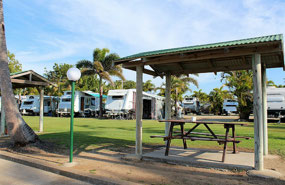
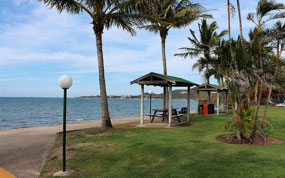
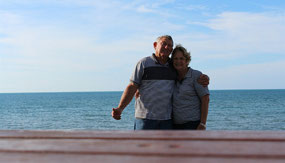
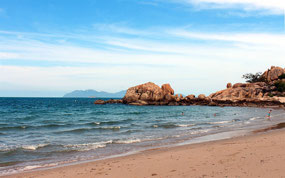

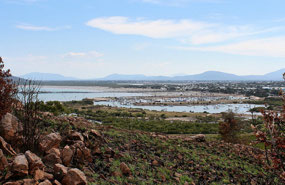

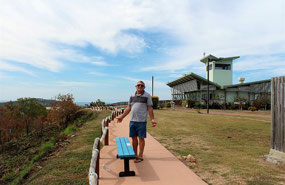
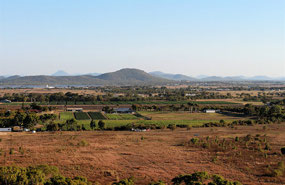
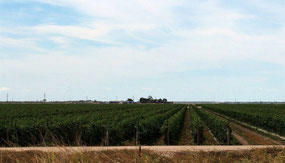
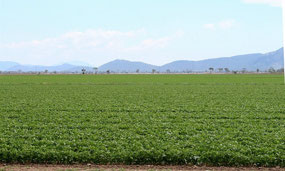
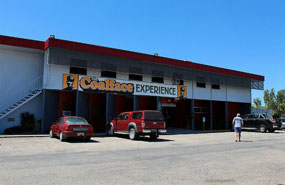
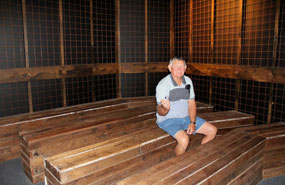
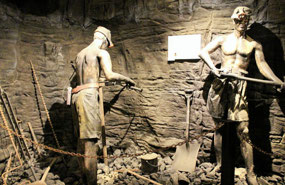
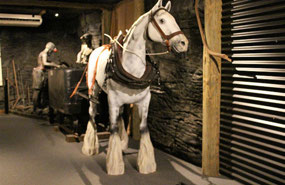
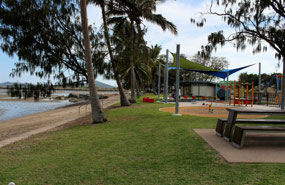
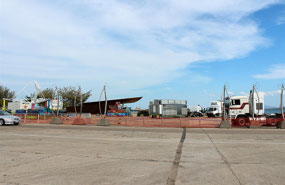
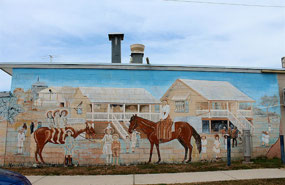
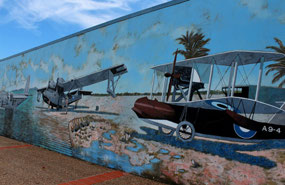
2025-05-22